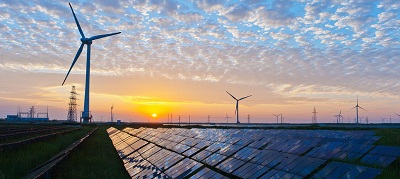BNEF releases 2018 clean energy predictions
Tags:clean energy solar BNEF article from solar star
http://guangfu.bjx.com.cn/news/en/20180118/513557.shtml
Chief Editor of Bloomberg New Energy Finance (BNEF ), Angus McCrone his team have laid out their top clean energy 10 predictions for the coming year.
Overall, they estimate that, similar to 2017, global clean energy investment in 2018 will be around US$333 billion, based on the fact that due to the “remorseless” reductions in project capital costs, particularly for solar , you will get more gigawatts for your money this year.
Global solar PV installations are expected to reach at least 107 GW, up from BNEF’s estimated 98 GW in 2017. China will again lead the pack, with between 47 65 GW; however new countries in Latin America, south-east Asia, the middle East Africa are expected to become “significant” markets.
“For instance, Mexico is likely to be a 3GW-plus market in 2018, Egypt, the U.A.E. Jordan between them at 1.7-2.1GW,” said Jenny Chase, head of solar at BNEF.
Going back to China, Chase says the solar boom seen in 2017is “fundamentally irrational”, with no determination on the mechanism that subsidies will be paid out, meaning many projects are being built before they secure a quota.
“However, it looks as if Chinese state-owned developers investors will build them anyway, on the assumption that the government will find a way , if not, compensation for the power itself will prevent a total loss,” says Chase.
Justin Wu, head of Asia-Pacific also sees China’s “solar fever” continuing, with distribution-grid-connected projects leading the charge. The volume of behind-the-meter solar projects is also expected to double. He adds that India, which saw 12 GW of new renewable capacity added in 2017, but a 20% drop in clean energy investment, will only see 10 GW of renewable capacity added this year. Concurrently, 2017 was also a “poor” year for fossil fuel additions. “The lag between financing construction means that Asia’s third-largest economy is likely to see only about 10GW of renewable capacity built in 2018, while as much as 13GW of fossil fuel plants are commissioned, many of them the uncompleted projects from last year,” says Wu.
2018 is expected to be the last year that fossil fuels outpace renewables, he says, with greater policy certainty a shrinking coal pipeline helping to drive renewables from 2019 onwards.
Looking towards the storage markets, BNEF predicts that lithium-ion (li-ion) battery pack prices will continue to fall this year, albeit at a slower rate than in previous years, at around 10 to 15%, “driven by economies of scale, larger average pack sizes energy density improvements of 5-7% per year,” says Logan Goldie-Scot, head of storage.
Overall, he says 2018 global storage delpoyments will exceed 2GW/4GWh, with South Korea continuing to lead the charge. However, the sector is not without its issues, with many said to be lacking adequate understing to support it.
“Policies rather than economics alone will determine the rate of uptake. Energy storage remains poorly understood by many within the energy sector by policy-makers,” says Goldie-Scot.
“This matters hugely since investing in alternatives such as natural gas power plants with a 25-plus year lifetime will either create a long lock-in period that would limit opportunities for other flexible resources such as storage, or result in stred assets further down the line.”
In the electric vehicle (EV) space, China is expected to remain the dominant player, accounting for half of the 1.5 million sales forecast globally. Europe will stay in the number two spot. “Watch Germany in particular as EV sales there doubled in 2017 could double again in 2018. North America should finish 2018 with EV sales of around 300,000, but Tesla is the wildcard there. If it can deliver on its production targets, U.S. sales could be much higher,” says Colin McKerracher, head of electric vehicles.





